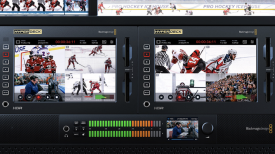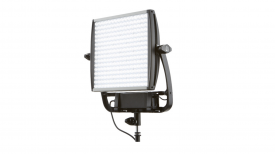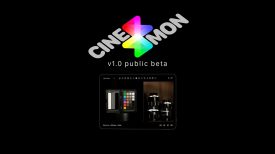
The SUMOLIGHT SUMOSPACE is a 400W 2800-6500K LED fixture with the claimed equavalent output of a 6K space light. Made in Germany, this light has been out for a couple of years now, but recently I got a chance to test one out.

The SUMOSPACE was primarily designed to be used as an overhead studio light, but I found it was versatile enough to be used for a variety of purposes. I got the chance to use the light when I was testing out the Fujinon MK zooms at Agai Trading in Tokyo a few weeks ago.
Unique design
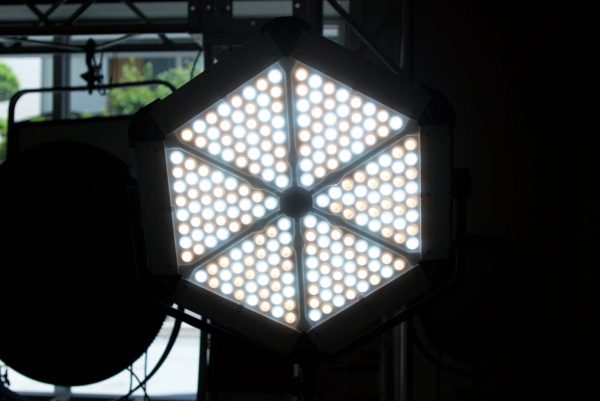
The light comes in a hexagon shape, which is quite different to most traditional round or square shaped lights. The light is very solidly constructed and well made. At 5.5kg (12lb) it certainly isn’t lightweight, but it feels like it would stand up to the test of time. Despite the 5.5kg weight the light is quite thin for a fixture that of this size and output.
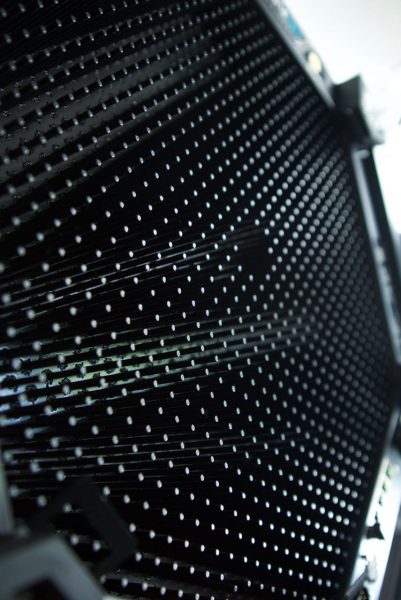
The SUMOSPACE doesn’t use any type of fan and relies on passive cooling to manage heat. On the back of the light there are hundreds of heatsinks, which certainly give it a unique look.
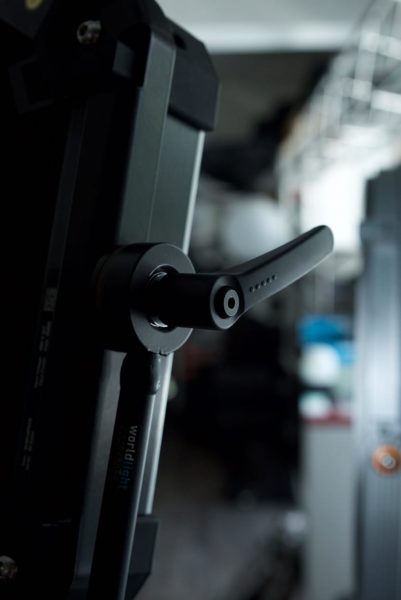
All the individual parts of the light are well made and the adjustment lock on the yoke frame doesn’t slip when tightened down.
Interchangeable optics
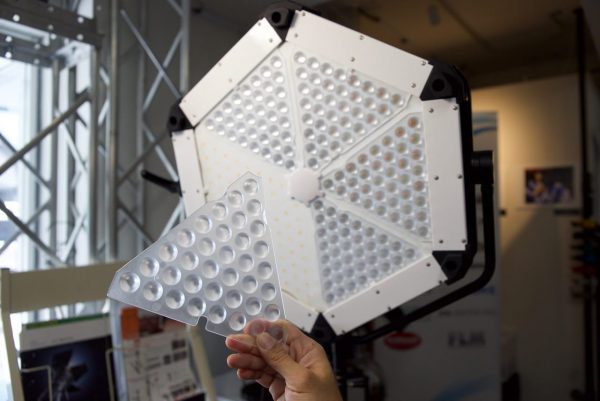
One of the unique design aspects of the light is that you can add or remove interchangeable optics to change the beam angle of the light to 30° or 60°. With no optics installed, the light has a 120° beam angle. Instead of having one large panel, the interchangable optics are broken down into six pieces. This is done for two reasons. The first is so that you don’t have to carry around or store large accessories , and the second is that you can use a combination of different beam angle optics at the same time. This is very handy if for example you want to have one half of the light brighter than the other side, or one half of the light spreading out over a larger area.
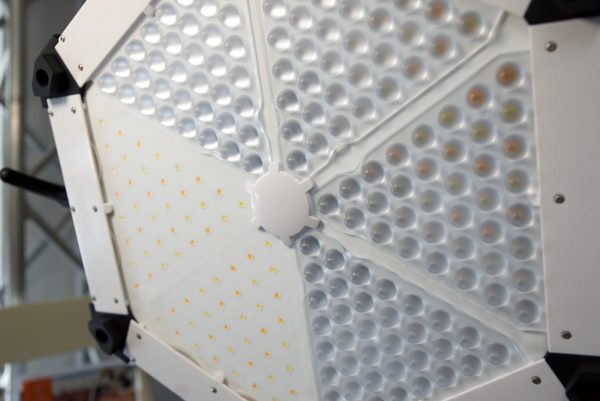
These panels are super easy to put on and take off the light. I really like this aspect of the light, and it’s not something I have seen before on any other fixture. The interchangeable optics make this light incredibly versatile as you can change the beam angle from a super concentrated 30° all the way out to 120°.
Controls
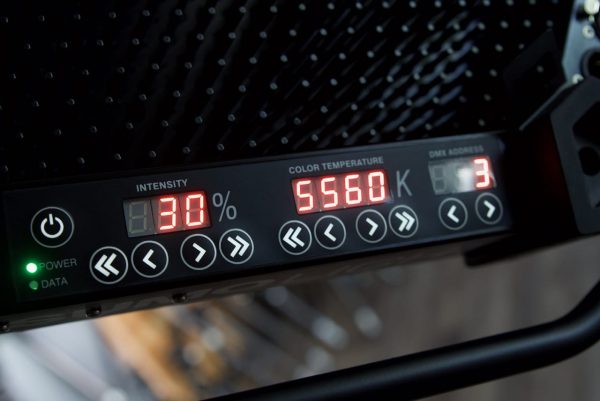
The light can be dimmed from 100-0% and offers very fine control over making kelvin temperature adjustments. You can change the colour temperature of the light in steps as small as 5K. Being able to adjust the light from 2800K up to 6500K is another nice feature. This Kelvin range should cover you for just about any lighting scenario.
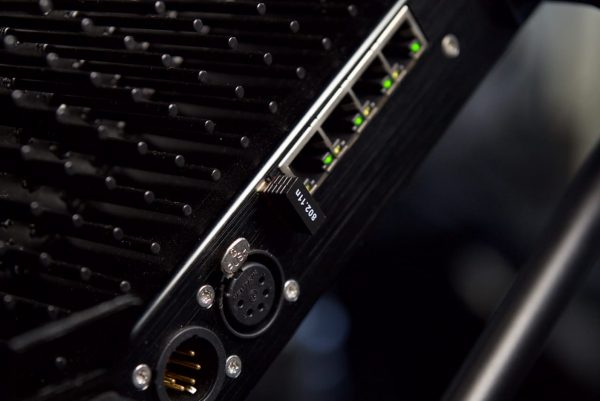
The controls on the back of the light are easy to use and well thought out. As well as dimming and colour temperature controls, the light has a five-pin DMX in and out, four EtherCon LAN Network Connectivity ports and a USB-A port.
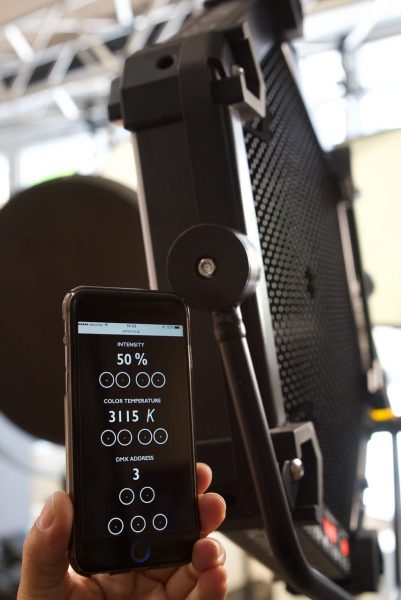
As the SUMOSPACE is primarily designed as a studio light, it can also be controlled remotely through WiFi. You don’t even need to download an app to use it, opening a simple web browser gives you full control over the light.
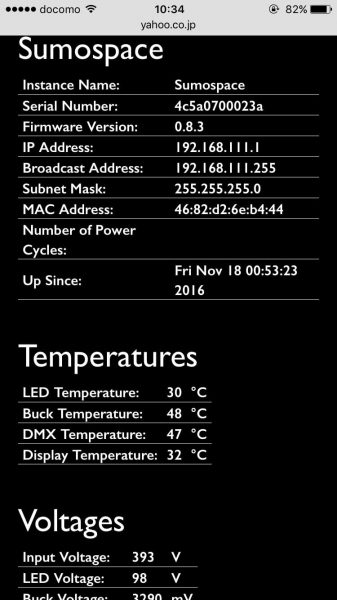
Not only do you get WiFi control over the light, but you can also see all the parameters of the light such as its current operating temperature and power draw.
Flicker-free
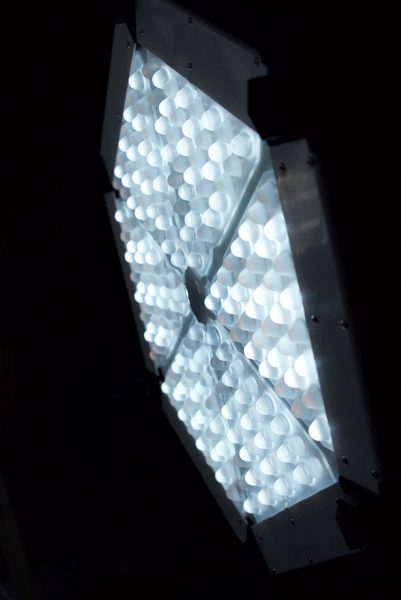
SUMOLIGHT claim that the light is flicker-free at any framerate. I could only test it at up to 240fps, so I will have to take their word for it.
Power consumption
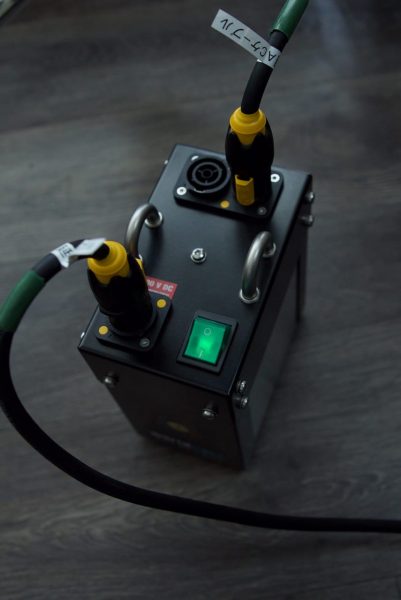
If you want to run this light off a camera battery then you are out of luck. The SUMOSPACE draws 400W and uses a power ballast that weighs 1.82kg (4lb). You could run the light remotely off a large DC power supply, but you would need quite a few batteries to do it.
Photometrics
I tested the light with a Sekonic C700 to find out just how much light the light put out and how colour temperature accurate it was. There is a lot of information here so feel free to skip over it if it doesn’t interest you.
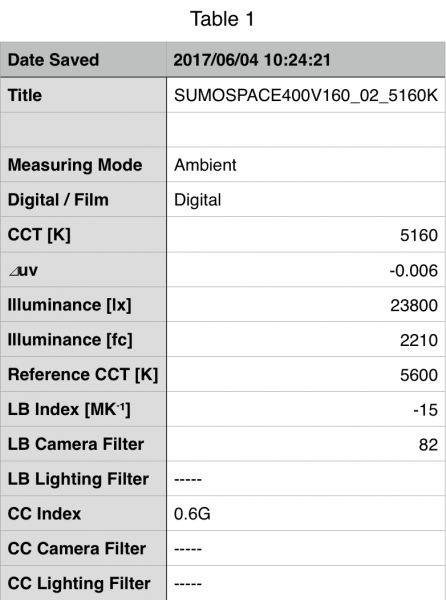
Above you can see the light’s output when set at 5600K in its standard 120° configuration. Measurements were taken at a distance of 1m in a controlled environment. As you can see the light put out 23800lx which is very impressive for a light with such a wide beam angle. The light recorded a kelvin temperature of 5160K when set at 5600K.
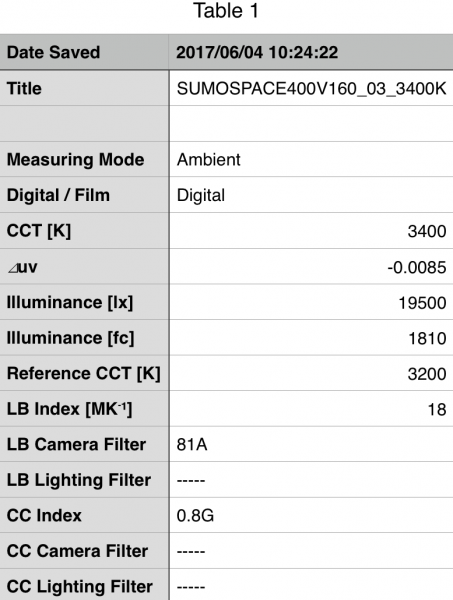
Above you can see the light’s output when it was set at 3200K in its standard 120° configuration. The light’s output at 3200K fell to 19500lx, which was a reasonable drop off from the 23800lx it put out when set at 5600K. It recorded a kelvin temperature of 3400K when set at 3200K.
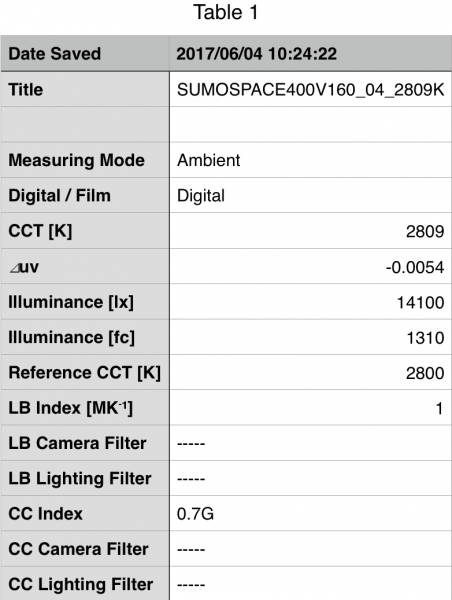
Above you can see the light’s output when it was set at 2800K in its standard 120° configuration. Again the output fell down to 14100lx, which is a huge drop off from the 23800lx recorded at 5600K. This is to be expected though given the light has far fewer LEDs activated at lower kelvin temperatures. As far as replicating a 2800K source it did a very good job, recording a figure of 2809K.
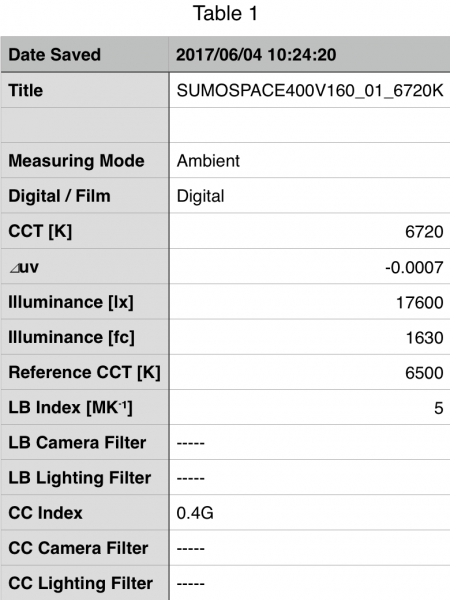
Above you can see the light’s output when it was set at 6500K in its standard 120° configuration. The light recorded an output of 17600K and a kelvin temperature of 6720K.
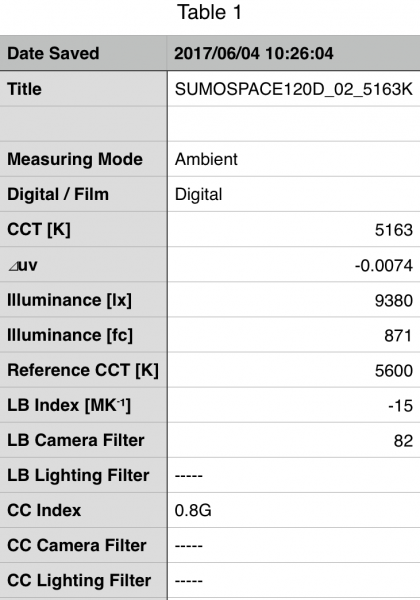
So what happens when we start changing the beam angle using the interchangeable optics? Above you can see the light’s output when using the 60° interchangeable optics at 5600K. It recorded an output of 9380lx, which means that when you use the interchangeable optics you lose an awful lot of output from the light. The light had a kelvin temperature of 5160K which was identical to when the light was tested at 5600K without the interchangeable optics. This tells me that the interchangeable optics are very well-made and don’t alter the colour temperature of the light.
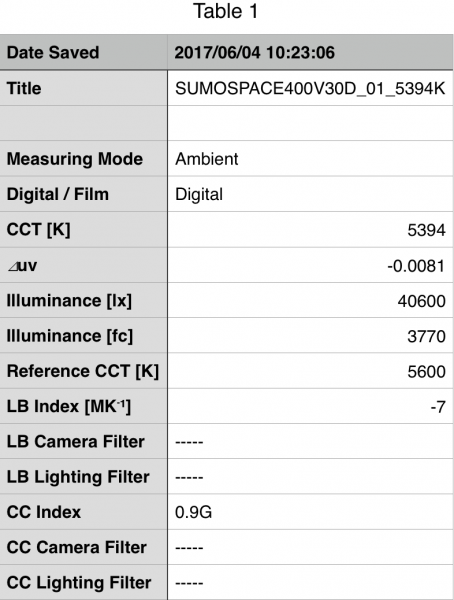
Above you can see the light’s output when using the 30° interchangeable optics at 5600K. The light recorded 40600lx which was impressive, and almost double the output of the light when it was in its standard 120° configuration. The kelvin temperature recorded was 5394K.
Colour rendering
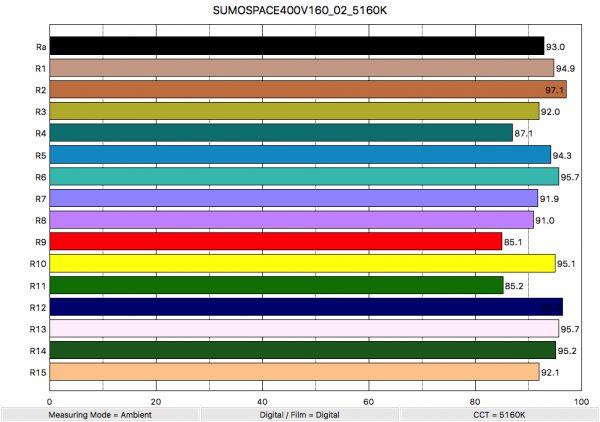
So how does the SUMOSPACE perform when it comes to colour rendition? Above you can see the results for the light when it was set at 5600K in its standard 120° configuration. The light had an average CRI (R1-R8) of 93, and an extended CRI (R1-R15) of 92.58. This is slightly lower than SUMOSPACE’s claimed CRI of 95. For replicating skin tones accurately the light recorded 85.1 for R8 (red), 95.7 for R13 (closest to caucasian skin tones), and 92.1 for R15 (closest to asian skin tones). While these results were lower than those claimed by the manufacturer they were still good given the light’s ability to be set anywhere between 2800-6500K.
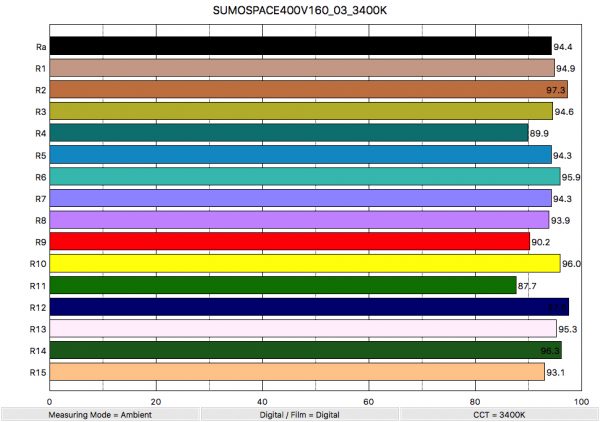
Above you can see the results for the light when it was set at 3200K in its standard 120° configuration. The light had a average CRI (R1-R8) of 94.5, and an extended CRI (R1-R15) of 94.08. For replicating skin tones accurately the light recorded 90.2 for R8 (red), 95.3 for R13 (closest to caucasian skin tones), and 93.1 for R15 (closest to asian skin tones).
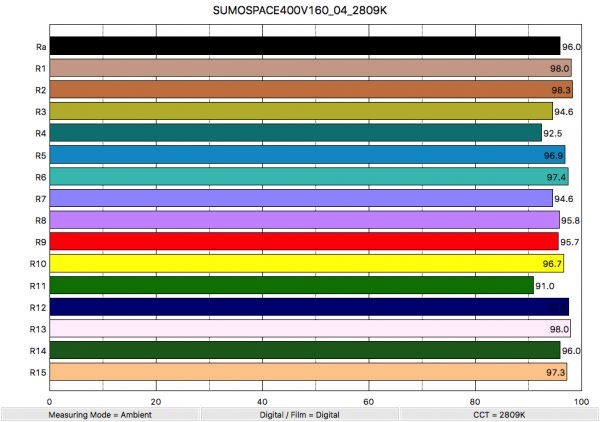
Above you can see the results for the light when it was set at 2800K in its standard 120° configuration. The light had a average CRI (R1-R8) of 96, and an extended CRI (R1-R15) of 96.04. For replicating skin tones accurately the light recorded 95.7 for R8 (red), 98.0 for R13 (closest to caucasian skin tones), and 97.3 for R15 (closest to asian skin tones).
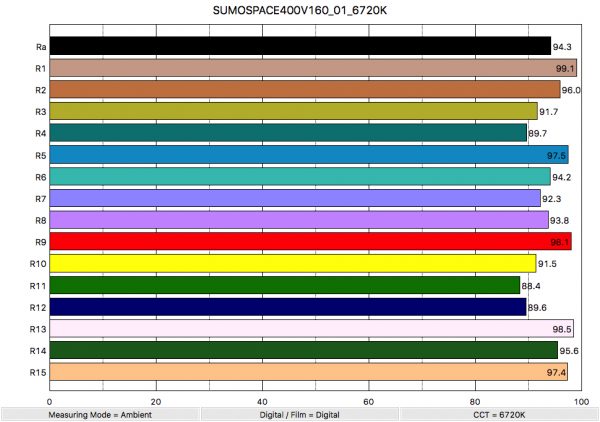
Above you can see the results for the light when it was set at 6500K in its standard 120° configuration. The light had a average CRI (R1-R8) of 94.3, and an extended CRI (R1-R15) of 94.22. For replicating skin tones accurately the light recorded 98.1 for R8 (red), 98.5 for R13 (closest to caucasian skin tones), and 97.4 for R15 (closest to asian skin tones).
The light remained fairly consistent across its whole 2800-6500K colour temperature range. The figures I got from my tests give me confidence that you can use the light at any colour temperature and maintain consistent colour rendition.
Quality of light
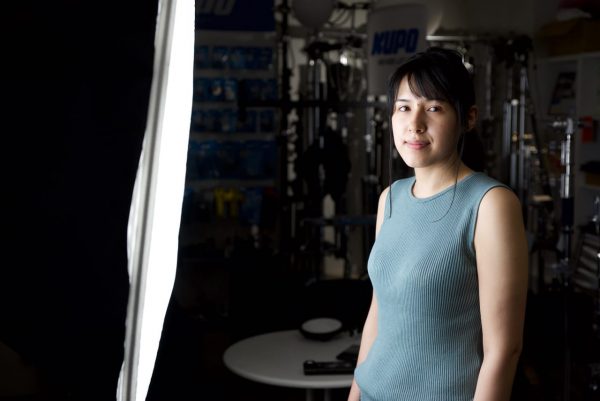
You can dissect photometric results to your heart’s content but they only tell part of the story. I’ve seen plenty of colour accurate fixtures that don’t particularly produce a nice quality of light. The SUMOSPACE produces an even amount of light with a nice falloff, and maintains that quality when you use it with a softbox.
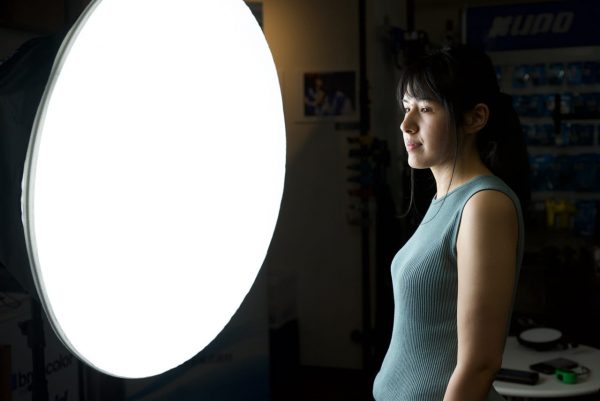
If you use it with a softbox the lights 120° beam angle gives you a really nice wide, strong, but diffused source. Equally if you want to limit the lights spill and keep it very directional by using the 30° interchangeable optics with the softbox you also can get really nice results.
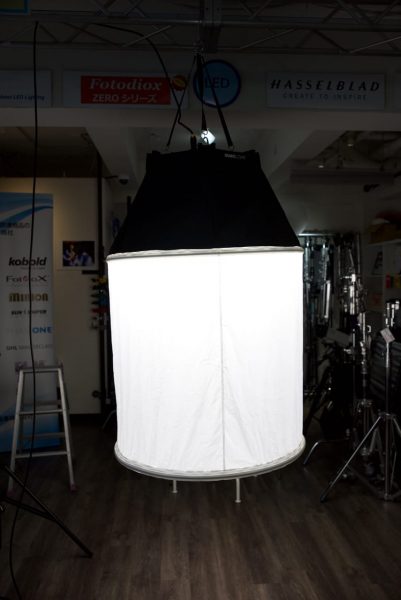
The SUMOSPACE is also available with a lantern attachment and the light has been designed so it is easy to attach to a ceiling, lighting grid or even a C-stand. The lantern is really easy to put on the light and it produces beautiful results in this configuration.
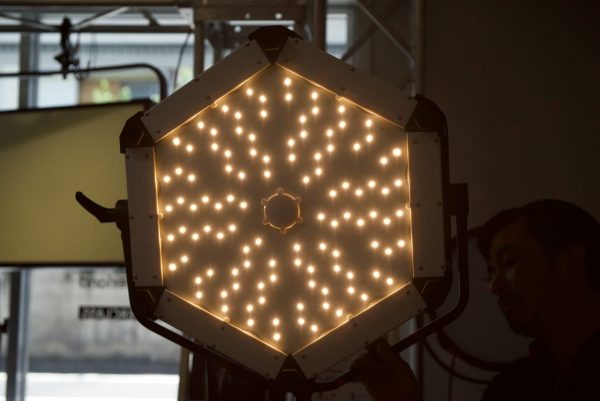
I was impressed with the results I was able to obtain with this light. The SUMOSPACE is a very versatile light that can be used for so many lighting situations. With interchangeable optics, a 2800-6500K kelvin temperature range, and good output and colour rendition it certainly ticks a lot of boxes if you are looking for a high-end lighting fixture.
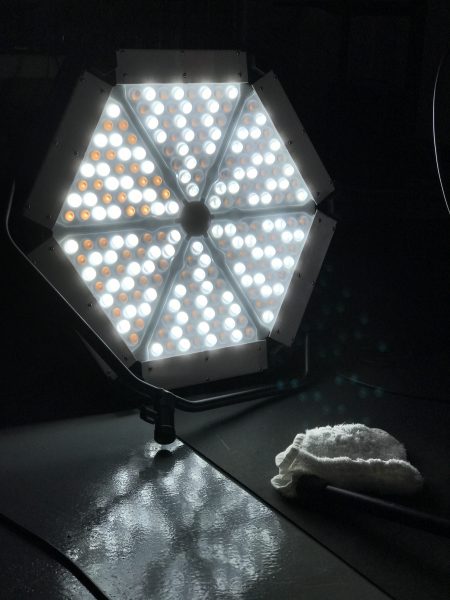
The only downside with having all these features and versatilty is the price. The SUMOLIGHT SUMOSPACE retails for £4,521.00 + VAT ($5,827US). By the time you add the additional interchangeable optics, a soft box, and a lantern attachment with skirts the price starts to get up there. In Japan Agai Trading sell the SUMOSPACE for 700,00JPY. They also sell a kit that includes the light, and the 30° and 60°interchangeable optics for 790,000JPY.



